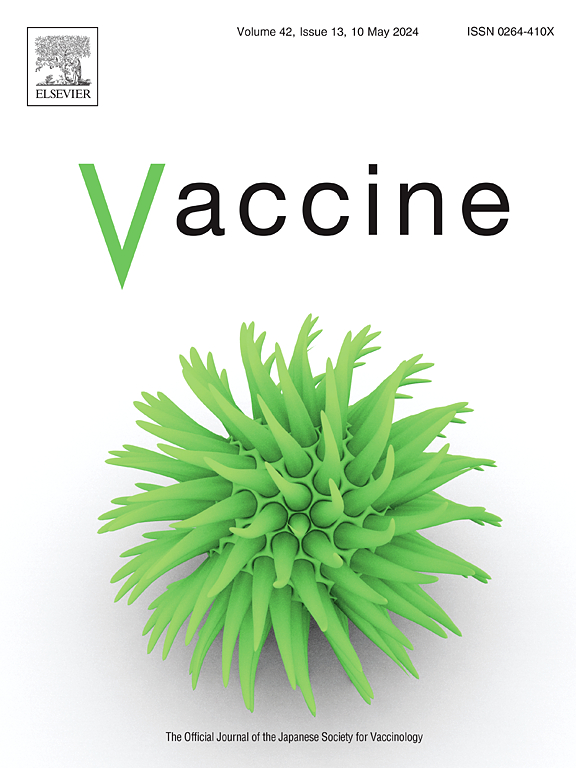Purification and characterization of recombinant neuraminidase as a potentially broadly protective influenza virus vaccine candidate
IF 4.5
3区 医学
Q2 IMMUNOLOGY
引用次数: 0
Abstract
Influenza viruses pose a significant public health threat, causing seasonal epidemics and occasional pandemics with substantial morbidity and mortality worldwide. The development of effective vaccines remains crucial for mitigating the impact of influenza virus infections. The influenza virus possesses two glycoproteins on its surface: hemagglutinin, which is immunodominant, and neuraminidase, which is immunosubdominant. Traditional influenza vaccines primarily target the viral surface glycoprotein hemagglutinin to induce protective immunity. However, the high mutation rate of this protein, particularly in response to selective pressure from immune responses, limits the durability and efficacy of current vaccines. Efficient production of influenza vaccines relies on scalable purification processes to ensure safe and efficacious antigens. Neuraminidase (NA), the second glycoprotein of influenza virus, has recently emerged as target for broadly protective protein subunit vaccine formulations, necessitating development of robust manufacturing and characterization methods for this antigen. Here we present a scalable approach for purifying recombinant NA, expressed in insect cells utilizing the baculovirus expression system. Lean purification processes, based on chromatography and tangential flow filtration, achieve high yield and purity while maintaining the target's structural integrity and biological activity. The purified product is characterized through a variety of techniques, which confirm its structural and functional properties, and the consistency of those throughout the experiments performed. Scalability from laboratory to manufacturing scale under good manufacturing practice (GMP) ensures reproducibility, thus advancing the development of recombinant NA-based vaccines for comprehensive influenza control.
重组神经氨酸酶作为一种潜在的广泛保护性流感病毒候选疫苗的纯化和特性研究
流感病毒对公共卫生构成重大威胁,在世界范围内引起季节性流行病和偶尔大流行,发病率和死亡率很高。研制有效疫苗对于减轻流感病毒感染的影响仍然至关重要。流感病毒在其表面具有两种糖蛋白:免疫优势的血凝素和免疫亚优势的神经氨酸酶。传统流感疫苗主要针对病毒表面糖蛋白血凝素诱导保护性免疫。然而,这种蛋白的高突变率,特别是在应对免疫反应的选择性压力时,限制了当前疫苗的持久性和有效性。流感疫苗的高效生产依赖于可扩展的纯化过程,以确保抗原的安全和有效。神经氨酸酶(NA)是流感病毒的第二种糖蛋白,最近已成为广泛保护性蛋白质亚单位疫苗制剂的靶标,因此有必要开发针对该抗原的强大制造和表征方法。在这里,我们提出了一种可扩展的纯化重组NA的方法,利用杆状病毒表达系统在昆虫细胞中表达。精益纯化过程,基于色谱和切向流过滤,实现高产率和纯度,同时保持目标的结构完整性和生物活性。纯化产物通过各种技术进行表征,这些技术确认了其结构和功能特性,以及在整个实验中进行的一致性。在良好生产规范(GMP)下,从实验室到生产规模的可扩展性确保了可重复性,从而推进了用于全面流感控制的重组na基疫苗的开发。
本文章由计算机程序翻译,如有差异,请以英文原文为准。
求助全文
约1分钟内获得全文
求助全文
来源期刊

Vaccine
医学-免疫学
CiteScore
8.70
自引率
5.50%
发文量
992
审稿时长
131 days
期刊介绍:
Vaccine is unique in publishing the highest quality science across all disciplines relevant to the field of vaccinology - all original article submissions across basic and clinical research, vaccine manufacturing, history, public policy, behavioral science and ethics, social sciences, safety, and many other related areas are welcomed. The submission categories as given in the Guide for Authors indicate where we receive the most papers. Papers outside these major areas are also welcome and authors are encouraged to contact us with specific questions.
 求助内容:
求助内容: 应助结果提醒方式:
应助结果提醒方式:


